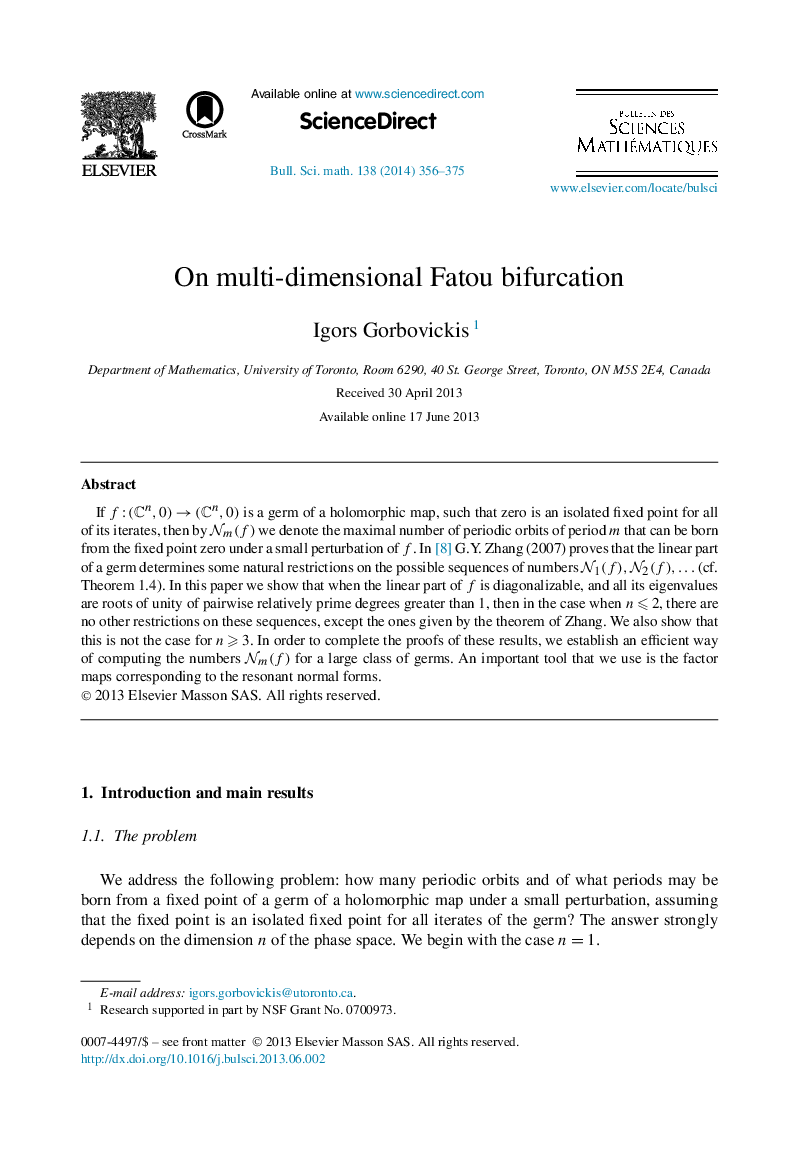| Article ID | Journal | Published Year | Pages | File Type |
|---|---|---|---|---|
| 4668968 | Bulletin des Sciences Mathématiques | 2014 | 20 Pages |
Abstract
If f:(Cn,0)â(Cn,0) is a germ of a holomorphic map, such that zero is an isolated fixed point for all of its iterates, then by Nm(f) we denote the maximal number of periodic orbits of period m that can be born from the fixed point zero under a small perturbation of f. In [8] G.Y. Zhang (2007) proves that the linear part of a germ determines some natural restrictions on the possible sequences of numbers N1(f),N2(f),⦠(cf. Theorem 1.4). In this paper we show that when the linear part of f is diagonalizable, and all its eigenvalues are roots of unity of pairwise relatively prime degrees greater than 1, then in the case when n⩽2, there are no other restrictions on these sequences, except the ones given by the theorem of Zhang. We also show that this is not the case for n⩾3. In order to complete the proofs of these results, we establish an efficient way of computing the numbers Nm(f) for a large class of germs. An important tool that we use is the factor maps corresponding to the resonant normal forms.
Related Topics
Physical Sciences and Engineering
Mathematics
Mathematics (General)
Authors
Igors Gorbovickis,
